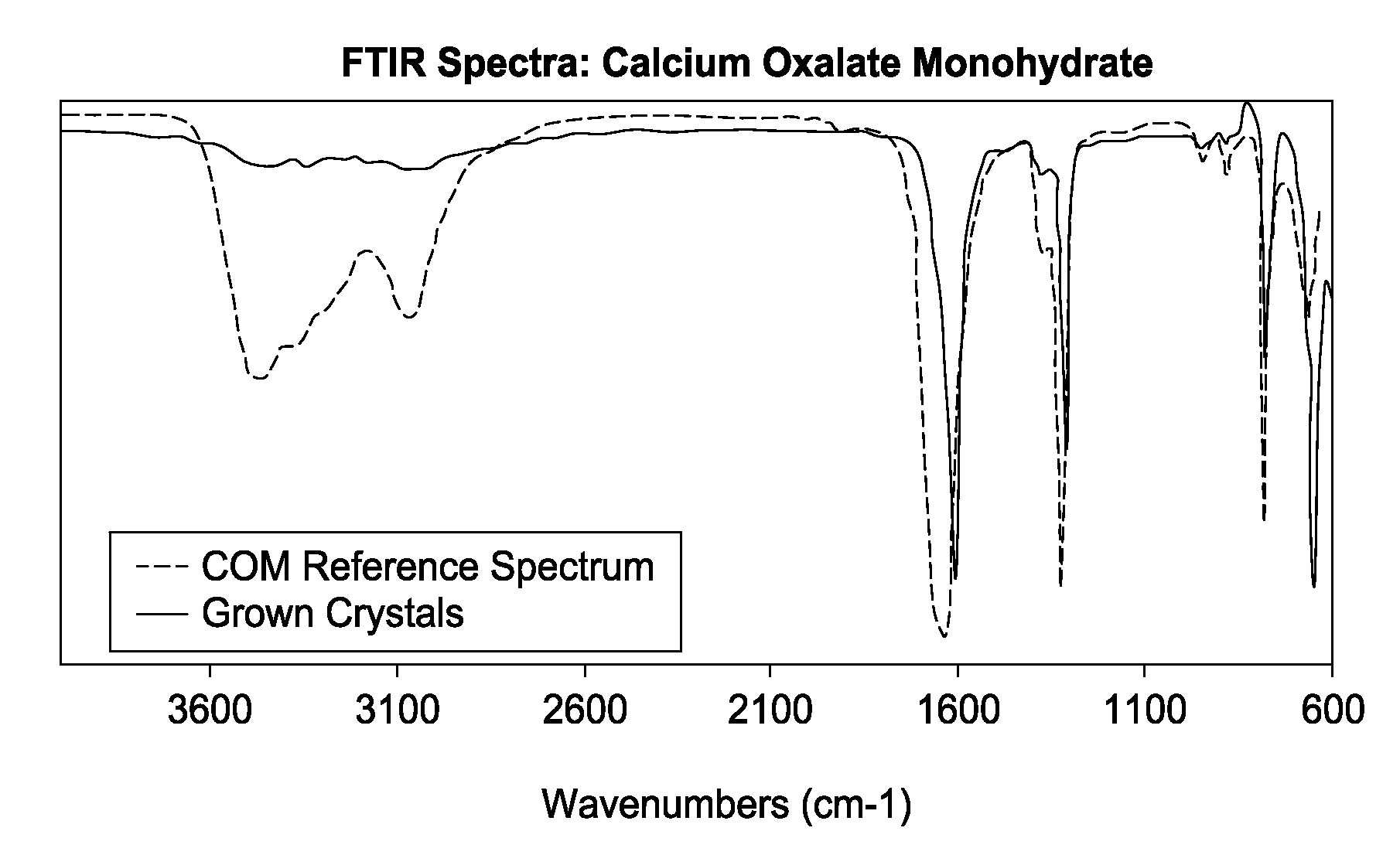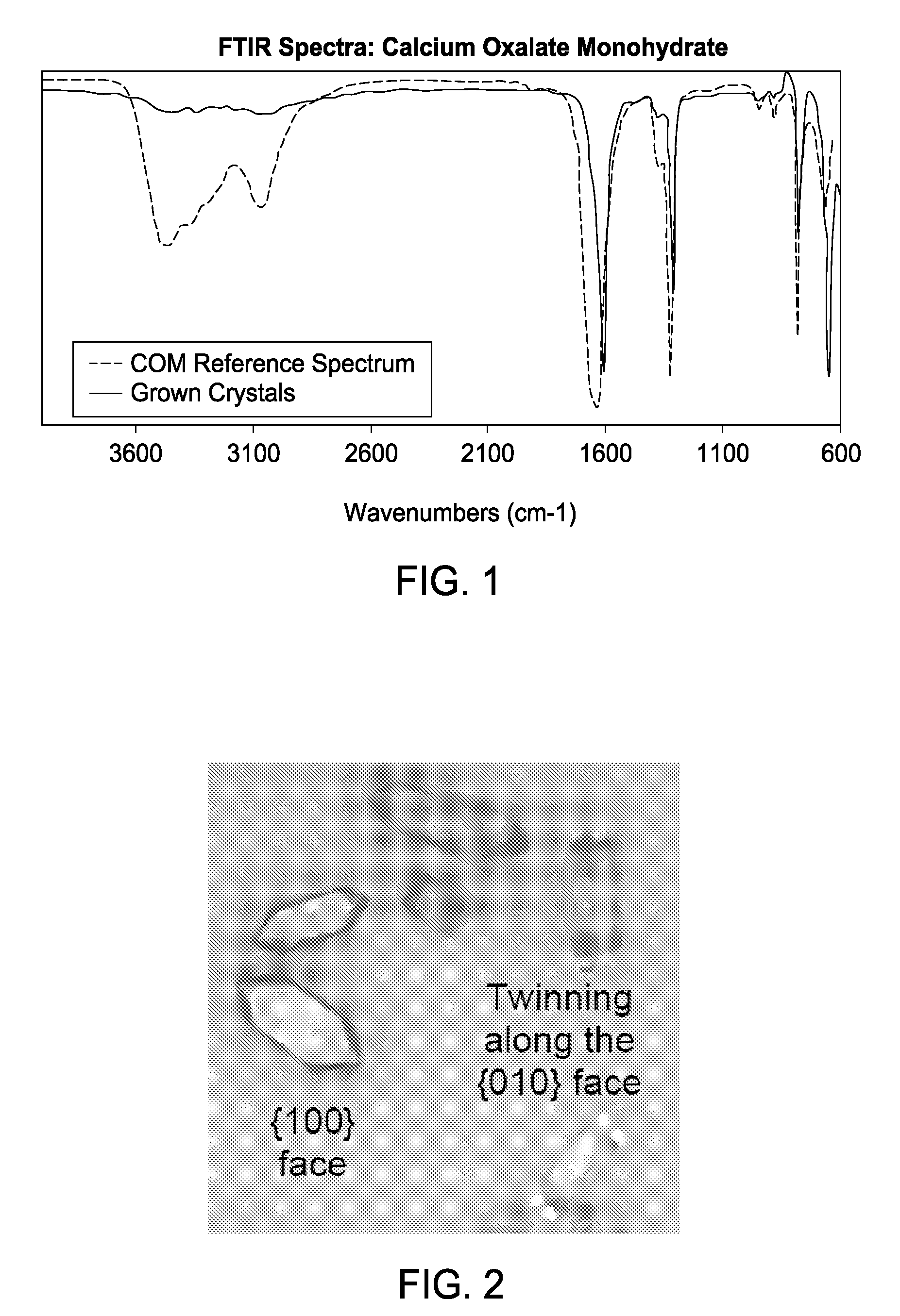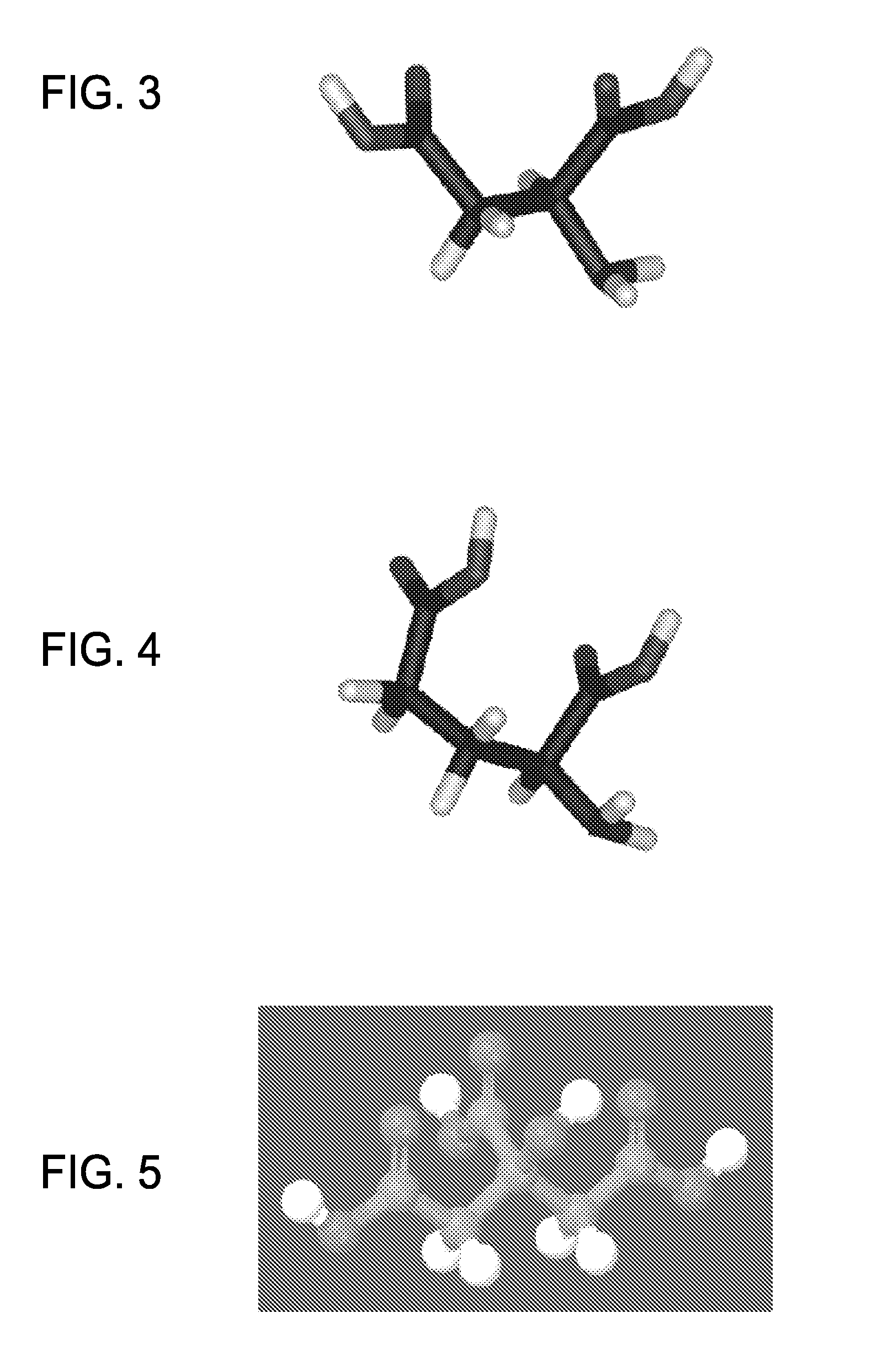Functionalization of Micro-And Nano Particles for Selective Attachment to Calcium Biomineral Surfaces
a biomineral surface and micro-and-nano particle technology, applied in the field of biomaterials, can solve the problems of increasing morbidity and cost, reducing the use of biocide, so as to achieve the effect of stone free state, enhanced yellow fluorescent protein, and enhanced cyan fluorescent protein
- Summary
- Abstract
- Description
- Claims
- Application Information
AI Technical Summary
Benefits of technology
Problems solved by technology
Method used
Image
Examples
example 1
Development of Magnetic Particles
[0051]Magnetic nanoparticles were developed that bond preferentially to the calcium oxalate crystalline structure of most kidney stones. The use of magnetic nanoparticles in medicine was recently reviewed. Typical applications include imaging and tumor treatment. In our case, once magnetic particles are attached, the stone fragment can be attracted to a magnetic tool (wire or stone basket) and moved as needed. Particles of Fe2O3 or Fe3O4 can be used with no known toxic effects on human tissues. Nevertheless, because of some uncertainty of the toxic effects of these particles, an attempt to prevent passage into general circulation is advisable. Therefore, the nanoparticles will be designed to exceed the diameter of capillary vessels (7 to 8 μm, which is the diameter of a red blood cell) and possibly collecting ducts (40 to 200 μm). There are several processes that have been developed to produce magnetic nanoparticles, but in general these particles ar...
example 2
Rendering Biomaterials Magnetic
[0057]The results from rendering biomaterials magnetic are shown in FIGS. 1-17. Calcium-based biominerals are the primary component of most pathological biomineralization in humans, including atherosclerosis and kidney stones. The ability to deliver targeted therapeutic agents to a biomineralized surface opens a wide variety of treatment, therapy, and imaging options for doctors and surgeons. The functionality of calcium binding proteins was used to develop the compositions and methods of the present invention to selectively attaching micro- and nano-particles to calcium-rich surfaces such as calcium oxalate. The results show selective attachment of iron oxide micro- and nano-particles to calcium-containing biomineral surfaces, although it is anticipated that a wide variety of particles or therapeutic agents could be functionalized using this technique. The resulting functionalized materials are characterized using Scanning and Transmission Electron Mi...
example 3
Movement of Kidney Stone Fragments by Attachment of Nanocomposite Superparamagnetic Particles
[0068]Large renal or ureteral calculi that are unable to pass spontaneously require endoscopic fragmentation or shock wave lithotripsy (SWL). While endoscopy has the advantage of manual fragment retrieval to improve stone free rates, access to these fragments may be hindered by collecting system anatomy, technical limitations of the endoscope, or poor visibility. Furthermore, retrieving the entire burden of stone fragments, while desirable, is time-consuming. The ability to attract and move these fragments en masse into an easily accessible area of the collecting system could facilitate endoscopic stone surgery as well as diminish costs by reducing time and obviating the need for secondary procedures. Novel nanocomposite paramagnetic particles were developed that selectively adhere to the calcium oxalate crystalline structure of a stone such that introduction of a magnetized instrument and p...
PUM
 Login to View More
Login to View More Abstract
Description
Claims
Application Information
 Login to View More
Login to View More - R&D
- Intellectual Property
- Life Sciences
- Materials
- Tech Scout
- Unparalleled Data Quality
- Higher Quality Content
- 60% Fewer Hallucinations
Browse by: Latest US Patents, China's latest patents, Technical Efficacy Thesaurus, Application Domain, Technology Topic, Popular Technical Reports.
© 2025 PatSnap. All rights reserved.Legal|Privacy policy|Modern Slavery Act Transparency Statement|Sitemap|About US| Contact US: help@patsnap.com



